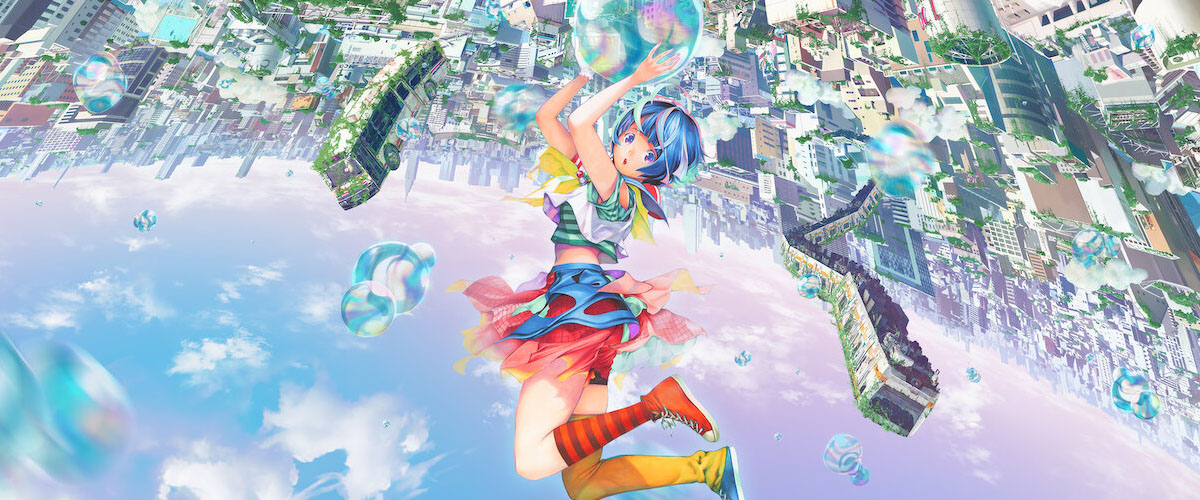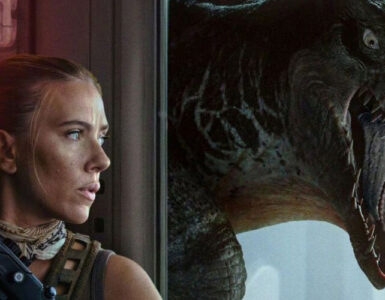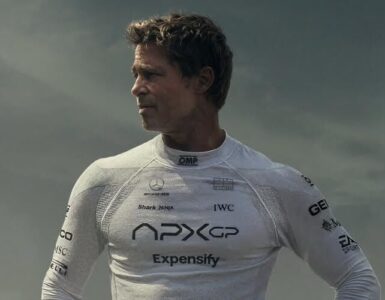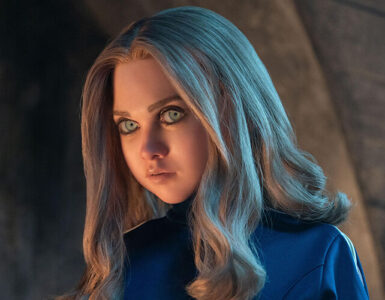The worlds of Attack on Titan, Guilty Crown, and Kabaneri of the Iron Fortress are rooted in a dystopian future, so it’s no surprise that Tetsuro Araki, the renowned Japanese anime director behind those works, has taken that premise with Netflix’s Bubble, where Tokyo has been abandoned after it was besieged by gravity-defying bubbles. Coupled with famed writer Gen Urobuchi’s expertise in cyberpunk presentation and psychological thrillers (Psycho-Pass, Puella Magi Madoka Magica), the 100-minute feature appears to have the promising makings of a riveting, richly-developed sci-fi adventure.
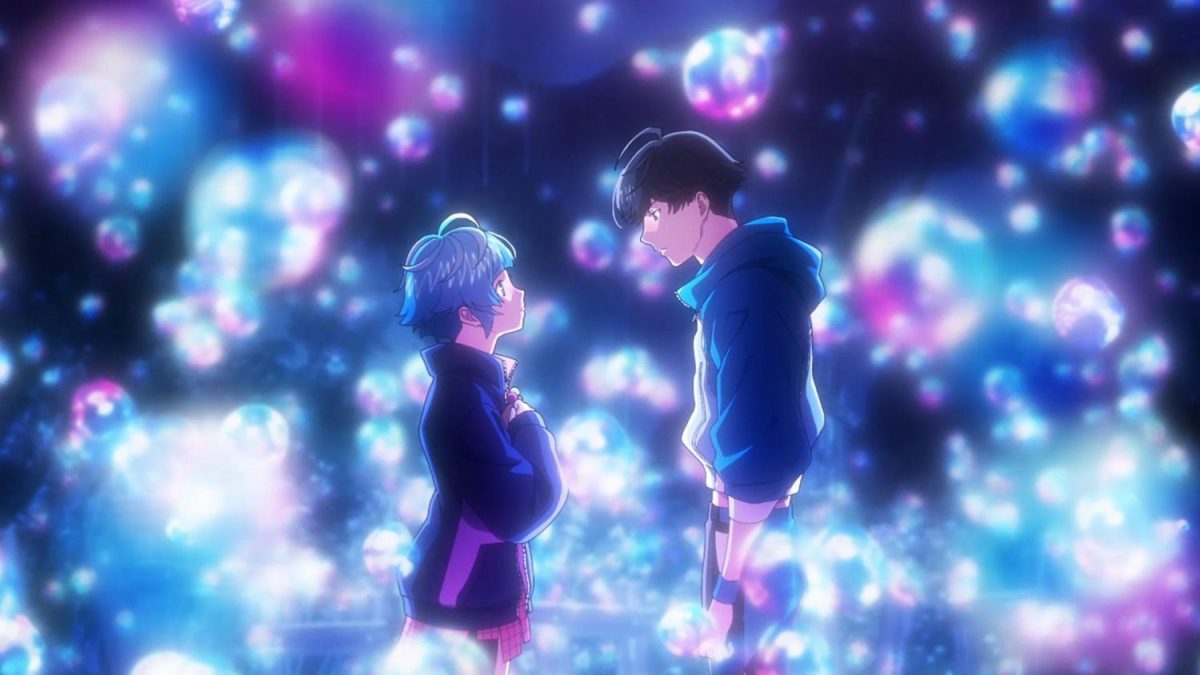
Sorry to have to burst your, well, you know, but Bubble doesn’t quite live up to expectations, falling flat in its ambitious storytelling amidst a wonderfully-composed music score, and a vibrant tapestry of visuals. The premise is intriguing, featuring an eclectic mix of parkour, romance, and sci-fi elements. Tokyo, in the film, is no longer the flourishing metropolis of the real world, having been enveloped in a giant bubble – the aftermath of a mysterious phenomenon that resulted in an explosion five years before the current setting.
Now sealed off from the rest of the world, the city has been transformed into an arena for parkour tournaments that pit two teams of five against each other, and may even result in certain death. At the centre of the narrative is Hibiki, the fastest and most skilled runner of the group, but who often keeps to himself. Usually adroit with scaling heights using the stray bubbles floating around, he overestimates himself during a night outing, and falls unconscious into the water. A girl named Uta shows up at the last minute to save his life, and the pair soon find themselves in the middle of a dicey situation that could threaten the city’s future.
It all sounds pretty straightforward, until the accompanying elements are brought into the picture. On one end, there’s the weak thematic relevance to Hans Christian Andersen’s The Little Mermaid; on the other, the exploration of elements like the Big Bang and grandiose scientific concepts throws viewers for a loop – and not necessarily in a good way. Bubble packs in more than what it can handle, and ends up telling a whole lot about nothing, which is its first mistake.
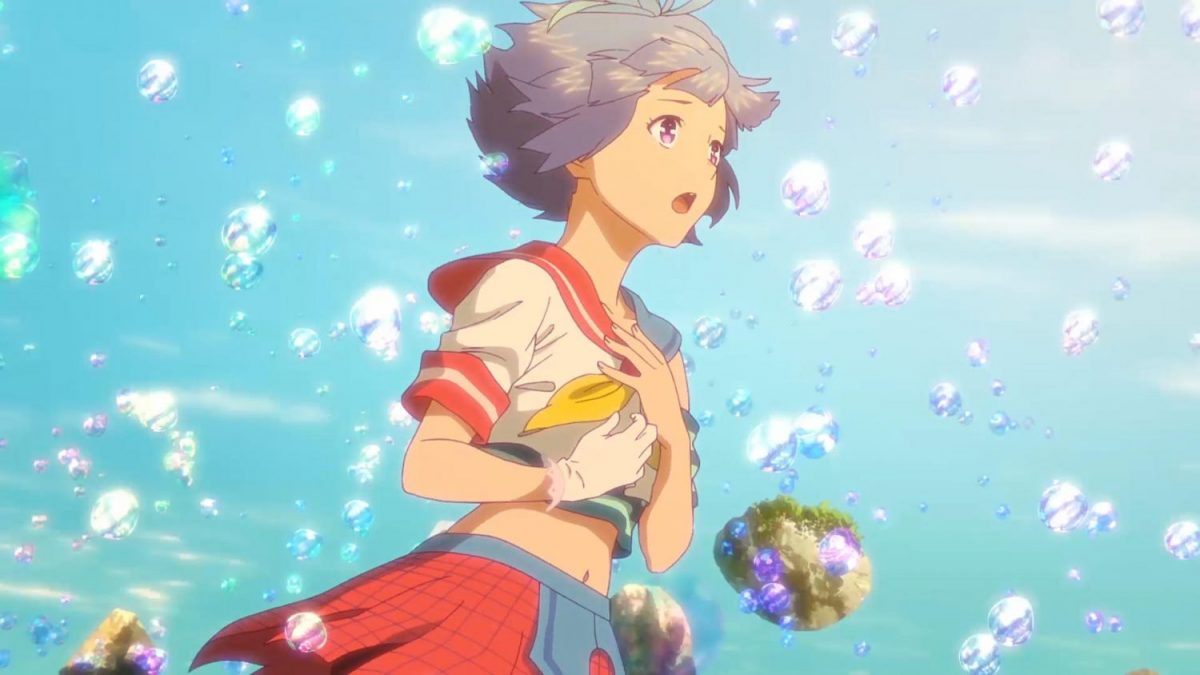
While the movie bears influences of the classic fairy tale, they are rather loose, and for the most part, do seem to be shoehorned into the plot. In fact, it’d take some time for viewers to realise the place of The Little Mermaid in the overarching narrative, as Urobuchi and Araki both struggle to explain the world and its complex circumstances at the beginning. The constant introduction of new ideas from start to end also barely leaves room for one to make sense of all the details, especially since they can be unnecessarily dense.
This approach might have worked better with a longer runtime, but with only 100 minutes on the clock, the ‘less is more’ rhetoric would certainly have worked better here.
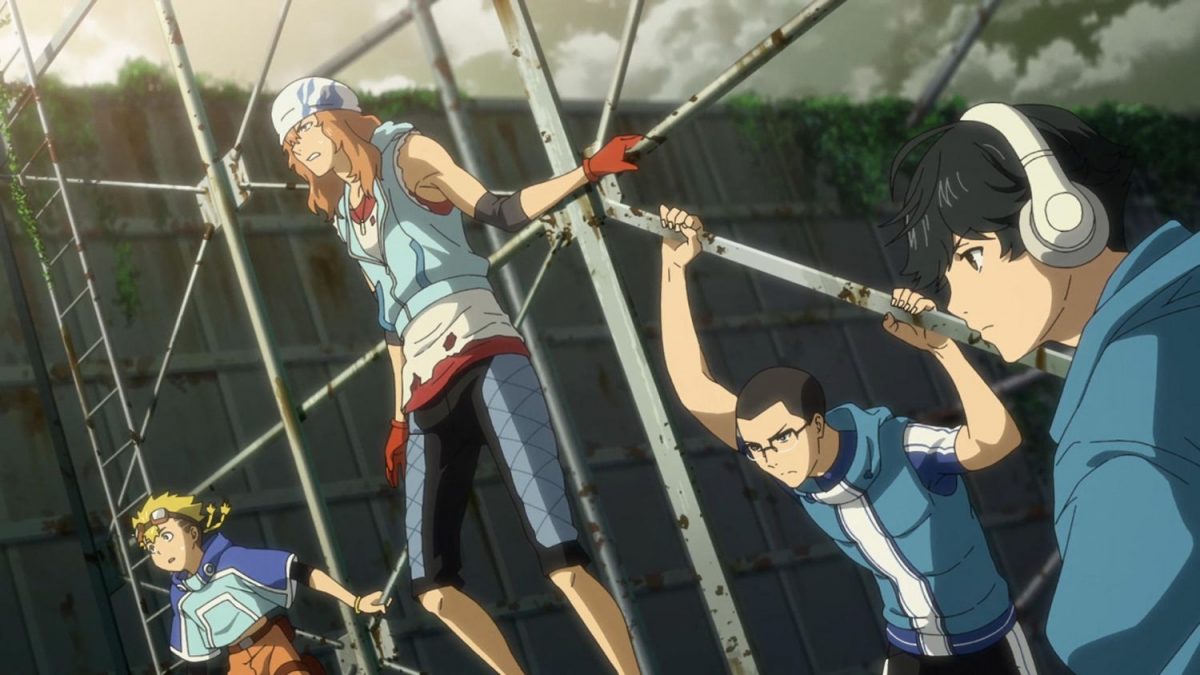
The movie’s second shortcoming, meanwhile, takes the form of shallow characterisation that’s partially influenced by its overloaded story. Since a fair bit of time is spent on understanding how everything fits into the larger narrative, audiences have fewer opportunities to develop a bond with the characters, resulting in a sense of detachment from the latter. Side characters, in particular, are often forgettable, blending too easily into the background to the point that their absence goes entirely unnoticed.
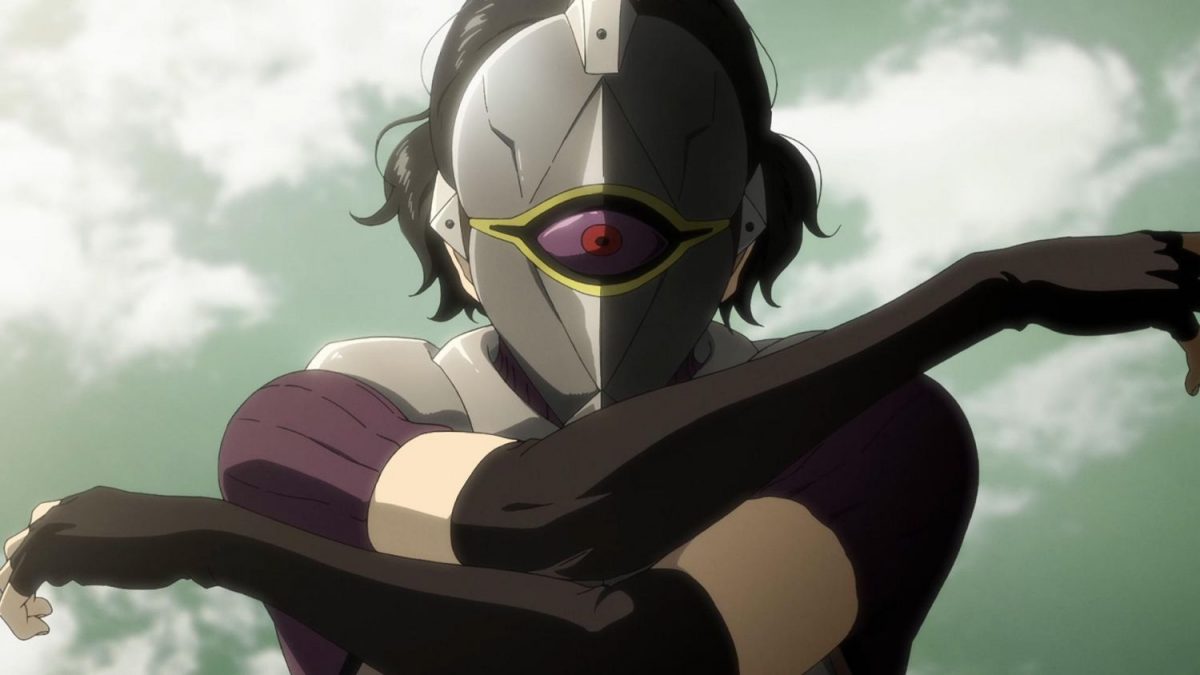
The antagonists are subjected to similar treatment as well. Referred to as the Undertakers in Bubble, these masked figures take to the streets with highly-advanced parkour gear, but nothing else is learned of them. Who are they? How did they lay their hands on such technology? Why do they hide their identities? All of these remain unanswered at the end of the film. Even Hibiki and Uta lack a nuanced touch – both are removed of the charisma that protagonists and deuteragonists often embody, with Hibiki’s 180-degree personality switch at a later stage coming across as rather out-of-character.
It’s unfortunate that Bubble fails to reach its narrative potential, because it excels everywhere else. The animated feature, helmed by Studio WIT, is a breathtaking sight to behold, with its striking, vibrant colours breathing life into the desolated, forgotten city of Tokyo. The visual design also changes nicely to reflect the atmosphere of specific scenarios: action scenes get louder, bolder hues, domestic moments feature softer lighting, and intense sequences welcome ominous, darker colour mixing. Meanwhile, the landscape boasts details that allude to real-world Tokyo, such as Animate stores, Japanese ferries, and the star of the show, the Tokyo Tower.
There’s just one gripe about the animation. During specific close-up scenes, the art style transitions into a manga-like aesthetic, sporting dramatised effects, rougher lineart, and harsher shading. While the intent to explore other options is admirable, the difference is rather jarring, and feels out of place with the rest of the animated sequences. These instances prove to be far and few between, however.
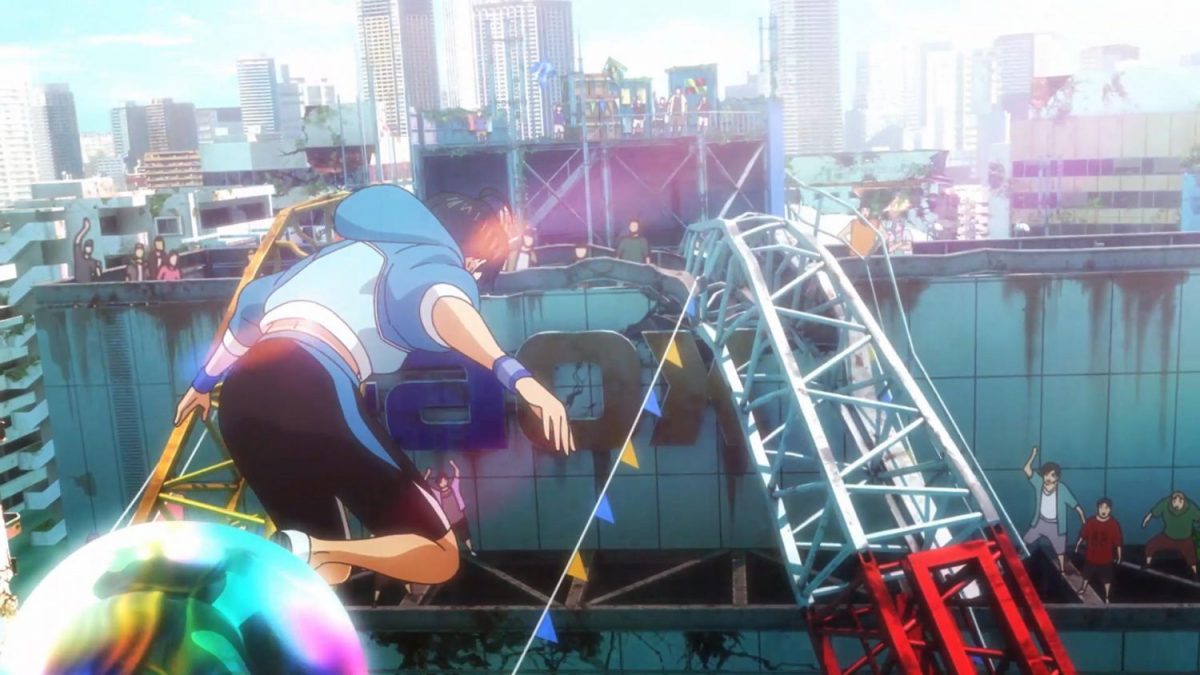
With Bubble, the thrills and technical prowess of parkour are skillfully captured through outstanding, dynamic cinematography. Switching between long shots and close-ups lends a seamless flow to the action, from the spring of a step into a backflip to the soft landing of a shoulder roll. Coupled with the free-swinging angle of the camera, the high-octane stunts and chase scenes are a delight to watch.
The sense of exhilaration is further heightened by composer Hiroyuki Sawano’s musical craft, which impresses with a series of well-mixed electronic synths, fast beats, and harmonious instrumentals – a familiar combination for those who’ve watched Attack on Titan or Kabaneri of the Iron Fortress. The opening song, “Bubble feat. Uta,” is performed by Eve, the singer behind Jujutsu Kaisen’s opening theme, “Kaikai Kitan”, and makes for an enjoyable listening experience with its upbeat rhythm.
Outside of the soundscape, the voice cast, too, puts up a great performance, though that’s only to be expected with famed names like Mamoru Miyano (Shin), Kaji Yuki (Kai), and Marina Inoue (Undertaker) on the list.

At the core of it, Bubble is a visually-gripping anime movie that presents an innovative and interesting premise, but fails to live up to its potential. It demonstrates the double-edged nature of ambition, and highlights the consequence of crashing and burning when the execution stumbles. Dropping a few thematic elements and ideas would have done it a lot of good, and as it is, the film is too cluttered to explore any point of focus in detail. Too much of one thing doesn’t necessarily work towards Bubble’s advantage here, although there’s one exception: pretty visuals and wonderful music – those are the saving grace of the show, and fortunately for viewers, there’s plenty to go around.
Bubble premieres globally on 28 April 2022.
GEEK REVIEW SCORE
Summary
While Bubble‘s attempt to shoot for the stars is admirable, it quickly fizzes out with a complicated and convoluted story that’s made bearable with breathtaking visuals and great soundtracks.
Overall
6.9/10-
Story - 6.5/10
6.5/10
-
Direction - 7.5/10
7.5/10
-
Characterisation - 6.5/10
6.5/10
-
Geek Satisfaction - 7/10
7/10

